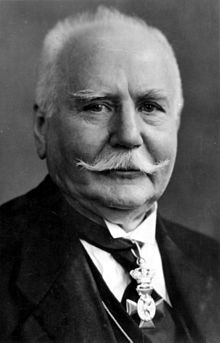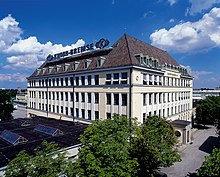
Messerschmitt AG was a German share-ownership limited, aircraft manufacturing corporation named after its chief designer Willy Messerschmitt from mid-July 1938 onwards, and known primarily for its World War II fighter aircraft, in particular the Bf 109 and Me 262. The company survived in the post-war era, undergoing a number of mergers and changing its name from Messerschmitt to Messerschmitt-Bölkow-Blohm before being bought by Deutsche Aerospace in 1989.
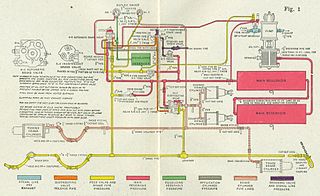
A railway air brake is a railway brake power braking system with compressed air as the operating medium. Modern trains rely upon a fail-safe air brake system that is based upon a design patented by George Westinghouse on April 13, 1869. The Westinghouse Air Brake Company was subsequently organized to manufacture and sell Westinghouse's invention. In various forms, it has been nearly universally adopted.
Westinghouse may refer to:
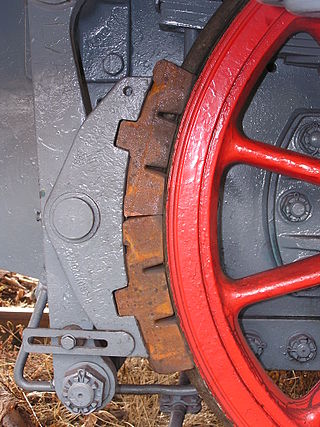
A railway brake is a type of brake used on the cars of railway trains to enable deceleration, control acceleration (downhill) or to keep them immobile when parked. While the basic principle is similar to that on road vehicle usage, operational features are more complex because of the need to control multiple linked carriages and to be effective on vehicles left without a prime mover. Clasp brakes are one type of brakes historically used on trains.

Franz Josef Popp was one of three men responsible for the founding of BMW AG and the First General Director of BMW AG from 1922 to 1942.
Vossloh AG is a rail technology company based in Werdohl in the state of North Rhine-Westphalia, Germany. The SDAX-listed group has achieved sales of around €930 million in 2016 and, as of 2017, had more than 4,000 employees.
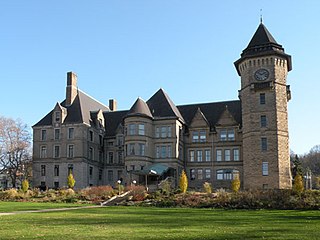
The Westinghouse Air Brake Technologies Corporation was founded on September 28, 1869 by George Westinghouse in Pittsburgh, Pennsylvania. Earlier in the year he had invented the railway air brake in New York state.
Invensys Rail Group was a division of Invensys, a UK-based multinational engineering company. It was a designer, manufacturer and integrator of railway equipment, including automation, signalling and controls. The group was headquartered in Chippenham, Wiltshire, and as of 2005, had over 2,750 employees in 14 locations internationally. It operated through four companies:
Westinghouse Rail Systems Ltd was a British supplier of railway signalling and control equipment to the rail industry worldwide. Its head office was in Chippenham, Wiltshire, where it manufactured a variety of mechanical and electrical/electronic railway signalling equipment. It had six other UK offices in Croydon, York, Birmingham, Crawley, Swanley and Glasgow. It also had a number of overseas offices, particularly in the Far East, including Melbourne.

A magnetic track brake is a brake for rail vehicles. It consists of brake magnets, pole shoes, a suspension, a power transmission and, in the case of mainline railroads, a track rod. When current flows through the magnet coil, the magnet is attracted to the rail, which presses the pole shoes against the rail, thereby decelerating the vehicle.
The New York Air Brake Corporation, located in Watertown, New York, is a manufacturer of air brake and train control systems for the railroad industry worldwide.

The Westinghouse Brake & Signal Company Ltd was a British manufacturer of railroad signs. Founded by George Westinghouse, it was registered as "Westinghouse Brake Company" in 1881. The company reorganised in 1920, associating with Evans O'Donnell, and Saxby and Farmer which merged to form the "Westinghouse Brake & Saxby Signal Company". The 'Saxby' would be dropped from their title in 1935.
Wheel slide protection and wheel slip protection are railway terms used to describe automatic systems used to detect and prevent wheel-slide during braking or wheel-slip during acceleration. This is analogous to ABS and traction control systems used on motor vehicles. It is particularly important in slippery rail conditions.

Rapp Motorenwerke GmbH was a German aircraft engine manufacturer based in Munich, Bavaria. Founded in 1913, the firm changed its name in 1917 to Bayerische Motoren Werke GmbH (BMW). The company later became known as Süddeutsche Bremsen-AG after its engine-production assets and the BMW name were transferred in 1922 to Bayerische Flugzeugwerke, which was then renamed to Bayerische Motoren Werke AG and subsequently evolved into the automotive manufacturer known today as BMW.

Theodor Georg Knorr was an engineer and entrepreneur on the field of railroad technology and founder of the company Knorr-Bremse. He is particularly remembered for his role in the development of the compressed air brake.

Haldex AB, also known as Haldex Group, is a Swedish company operating in the commercial vehicle industry. Haldex focuses on brake products, air suspension systems and products to enhance safety for heavy vehicles. The Foundation Brake product line includes brake products for wheel ends such as disc brakes, brake adjusters for drum brakes and actuators. Air Controls comprises products that improve the safety and driving dynamics of the brake system, such as compressed air dryers, valves, ABS and EBS.

The Kunze-Knorr brake is an automatic compressed-air brake for goods, passenger and express trains. It was the first graduated brake for goods trains in Europe. When it was introduced after the First World War, goods train brakes switched from hand operation to compressed-air in various European countries. The Deutsche Reichsbahn alone put the cost of equipping German goods wagons with Kunze-Knorr brakes between 1918 and 1927 at 478.4 million Reichsmarks. The operating cost savings from faster goods services and having fewer brakemen was assessed by the Reichsbahn at almost 96.3 million Reichsmark annually.
Kiepe Electric GmbH is a German manufacturer of electrical traction equipment for trams, trolleybuses other road and rail transport vehicles, as well as air-conditioning and heating systems, and conveyor device components. Founded in 1906, it was known as Kiepe Elektrik GmbH until 2003, when it was renamed Vossloh Kiepe, following its acquisition by Vossloh AG. Vossloh sold the company to Knorr-Bremse in January 2017, and in May 2017 Knorr renamed it Kiepe Electric GmbH.
Heinz Hermann Thiele was a German businessman and the chairman of Knorr-Bremse AG, a German automobile brakes manufacturer, and chairman of Vossloh, a German transport technology manufacturer. At the time of his death, he had a net worth of $20.2 billion, making him the fourth richest person in Germany; he was also the largest shareholder in the German carrier Lufthansa AG. He was a recipient of the Order of Merit of the Federal Republic of Germany and the Bavarian Order of Merit.

Siemens Viaggio Comfort is a brand of locomotive-hauled railroad passenger cars built by Siemens Mobility. The car was designed in the early 2000s and was based on the earlier Siemens Viaggio Classic railcars. The railcars were first used in 2008 on Railjet, a high-speed rail service in Europe operated by the Austrian Federal Railways (ÖBB) and Czech Railways (ČD).

